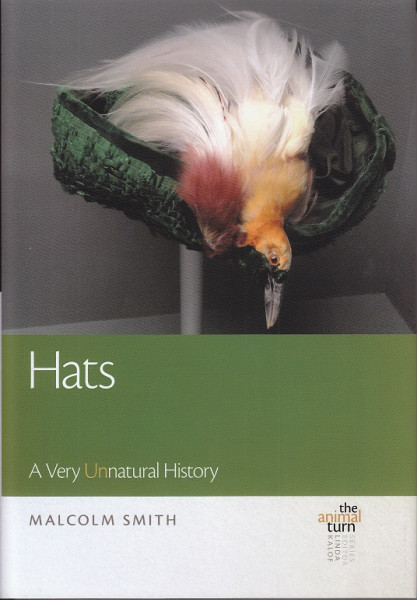
Publisher: Michigan State University Press, Michigan
Publication Year: 2020
Binding: 2
Page Count: 171
ISBN Number: 9781611863475
Price: £39.99
Hats: a Very UNnatural History
The vivid plumage used on the hat on the cover of this book is a reminder of the main reason birds are featured in a book on hats. Covering the history of hats from their earliest evidence at the end of the Stone Age through the peak of the fur and feather trade to modern hat styles, this book cleverly introduces us to the consequences of extravagant tastes in materials and fashions. I picked up this book intrigued as to what facts I might glean from its pages and found myself both fascinated and horrified by the scale of the feather trade that boomed in the 'Western world' that drove many species to be hunted to extinction. I knew this had happened but reading the numbers and weights of plumage and pelts auctioned in the major cities really put things into scale and made me wonder if it might be possible to examine the former population numbers of different species back before such trades put them into endangered numbers.
The chapters follow a wide set of topics to take you through this journey, from the earliest hats and the fur trade to specifics of the European and North American markets and fashions ending with 20th Century outcomes. One chapter that might have information that is new to most readers is that called 'Ladies with influence'. This recounts the usually untold histories of how woman founded both the RSPB and Audubon Society with the aim to prevent the mass persecution of birds (and mammals) for the hat trade. Modern conservation efforts are then neatly discussed in the penultimate chapter pointing out where some species have been able to revive their population numbers but that fragmentation of populations means there are still many that have a long way to go. Modern fashions and principles may mean that fewer hats are made with real plumage and furs but there is still a long way to go to recover from the historic damages done.
This book is perfect for both the budding historian of either conservation ecology or fashion history, providing many insights into the conflicting natures of the fashion trade and the superiority of natural feathers and fur over artificial substitutes.
Book reviewed by Katharine Bowgen
Buy this book




Share this page